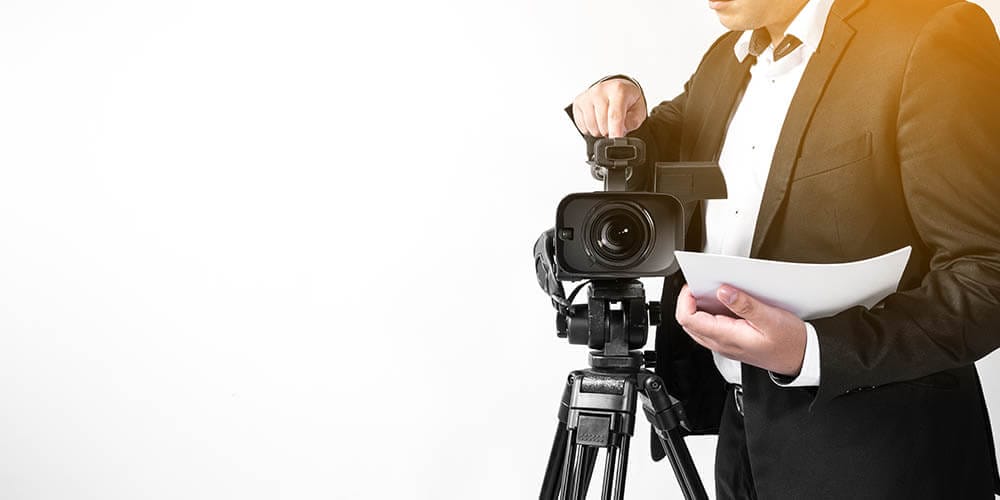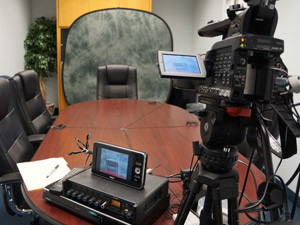Why Legal Videography Is Important for Accurate Legal Record-Keeping
In the realm of lawful process, the precision of record-keeping is critical, and lawful videography arises as a vital tool in this context. By catching the subtleties of spoken and non-verbal communication, it dramatically reduces the possibility for false impression that can accompany standard written documents. In addition, the preservation of authentic aesthetic evidence not only improves the reliability of testaments however also adds to a thorough account of occasions. As we check out the complex benefits of lawful videography, one have to consider its ramifications for the future of judicial honesty and openness - legal videography.
Significance of Visual Evidence
Establishing the importance of aesthetic proof in legal procedures is critical for guaranteeing accurate record-keeping and boosting the total honesty of the judicial procedure. Aesthetic evidence acts as a critical tool in documenting events, conditions, and various other pertinent information that may be crucial to an instance. Unlike composed accounts, which are vulnerable to analysis and predisposition, visual recordings provide a purpose, unalterable representation of facts as they happened.


This type of proof can catch a selection of elements, including witness habits, ecological context, and physical evidence, every one of which may affect judicial outcomes. By offering a clear and extensive visual story, lawful videography removes ambiguity and aids to protect the authenticity of the evidence.
Furthermore, aesthetic proof can be crucial in minimizing conflicts over valid discrepancies, as it enables a straight comparison against testament and other documented records. In an era where digital modern technology is increasingly prevalent, the capacity to present visual evidence successfully can significantly enhance the total high quality of legal process. Ultimately, the incorporation of visual evidence not only bolsters the documentation procedure but also enhances public rely on the judicial system by advertising openness and responsibility.
Enhancing Statement Reliability
The integration of lawful videography into court proceedings dramatically boosts the reputation of witness statement. By recording the nuances of verbal and non-verbal communication, video clip recordings offer a more comprehensive depiction of a witness's temperament, emotions, and dependability. This visual documentation permits jurors to observe the witness's body language, facial expressions, and overall conduct, which are important components that can affect their assumption of statement credibility.
Moreover, legal videography lowers the possibility for misinterpretation or distortion of testimony that might happen in composed records. Customers can see and hear the testament as it existed, guaranteeing that the context and tone are maintained. This credibility promotes a greater sense of trust amongst jurors, that may be more inclined to believe statement that they can witness firsthand.
Furthermore, the existence of video clip footage can deter witnesses from providing misleading or exaggerated declarations, as they know that their testament is being videotaped. This accountability strengthens the integrity of the judicial process. Inevitably, lawful videography acts as an essential tool in ensuring that witness statement is not just accurately illustrated yet additionally viewed with increased trustworthiness by my website all parties entailed.
Comprehensive Document Preservation
Comprehensive document preservation is vital for preserving the honesty of legal process. Legal videography serves as a critical device in this procedure, providing a precise aesthetic and acoustic account of testimonies, depositions, and various other turning points in an instance. Unlike standard written transcripts, video recordings record the subtleties of body language, tone, and emotion, which are crucial for recognizing the context and intent behind declarations made throughout legal process.

Moreover, the capability to examine video clip proof allows lawyers to determine vital information that may have been neglected in created documents. By maintaining a thorough archive of legal proceedings via videography, law office can maintain the highest criteria of accuracy and responsibility, eventually adding to a fairer judicial procedure.
Enhancing Lawful Process
Improving lawful proceedings is vital for boosting effectiveness and decreasing hold-ups within the judicial system. Legal videography works as a critical device in great post to read achieving this goal by supplying clear and accurate visual documents of court hearings, depositions, and testimonies. This innovation allows for real-time recording, ensuring that all spoken and non-verbal signs are captured, which can assist in quicker resolution of disagreements.
The integration of videography right into lawful processes lessens dependence on traditional approaches, such as prolonged transcripts, which can be taxing to create and evaluate. By having actually accessibility to tape-recorded footage, lawyers can swiftly reference crucial minutes, boosting their ability to prepare and present situations effectively. This immediacy likewise aids in the clearing up of testaments, reducing the possibility for false impression.
Moreover, aesthetic documentation promotes a more appealing court room experience for jurors, assisting them to comprehend complicated info a lot more conveniently. Inevitably, lawful videography enhances communication among all parties involved, from attorneys to courts to jurors, therefore advertising a much more effective judicial process (legal videography). In an age where time is important, accepting this modern technology is crucial for the contemporary legal landscape
Admissibility in Court
Precise documentation is vital not only for efficiency yet additionally for making certain that proof is acceptable in court. Legal videography acts as an essential tool in this procedure, providing a reputable aesthetic document of testaments, statements, and events. Courts typically require proof to try this site satisfy particular standards of admissibility, including importance, credibility, and reliability. High-quality video clip recordings can satisfy these criteria by recording clear sound and visual information that written records may overlook.
To be considered permissible, legal videography has to stick to well-known procedures, such as proper equipment use, appropriate lights, and clear sound capture. Additionally, it is vital to have certified videographers who comprehend the lawful demands surrounding proof collection. The chain of custodianship must likewise be kept to stop any kind of insurance claims of meddling or alteration.
Moreover, lawful videography can boost the persuasiveness of evidence by supplying jurors with a direct view of the testament, permitting for a more engaged understanding of the situation. In summary, the combination of lawful videography right into record-keeping not just supports efficiency however additionally strengthens the stability and admissibility of proof in court process.
Final Thought
In final thought, legal videography plays a critical function in making sure accurate lawful record-keeping by offering objective aesthetic documents. This method enhances the trustworthiness of testaments, protects thorough records, and simplifies lawful proceedings. Additionally, the admissibility of top quality video evidence in court more emphasizes its significance - legal videography. Inevitably, the unification of lawful videography right into the judicial process promotes transparency and boosts public rely on the stability of the legal system.